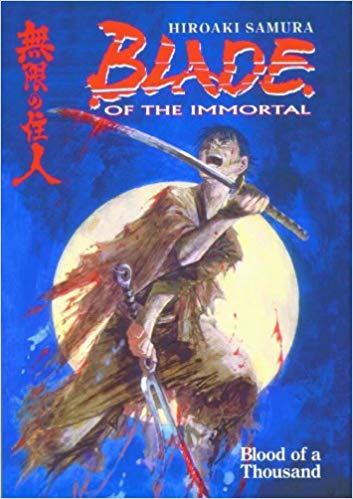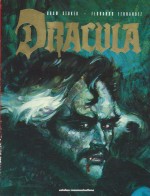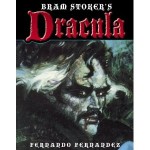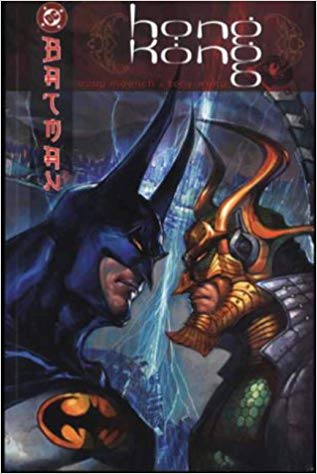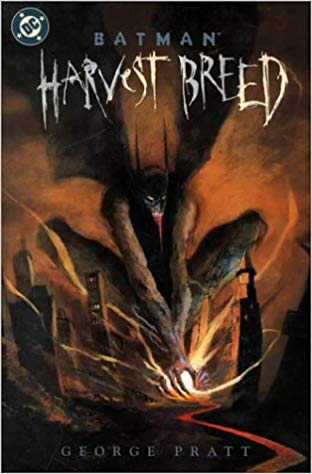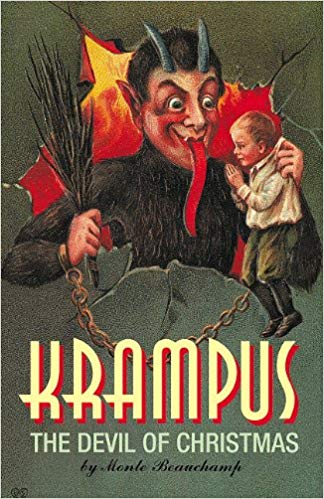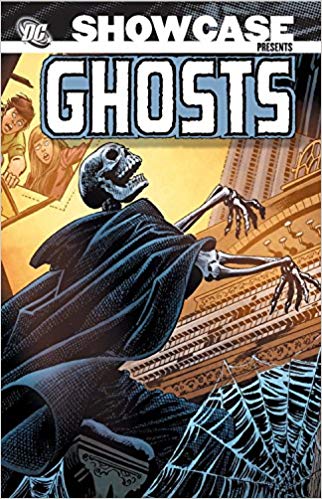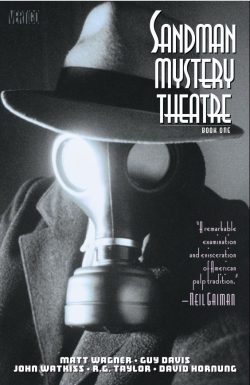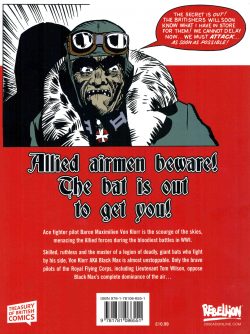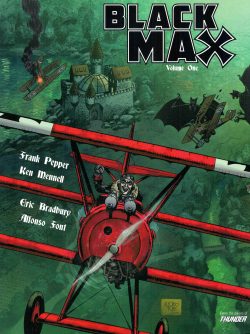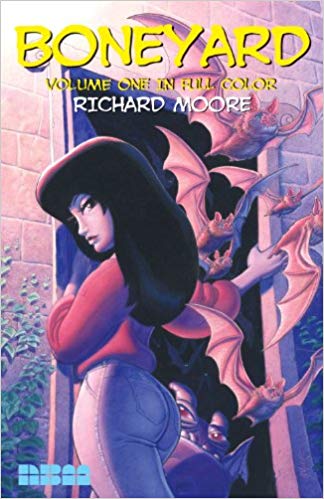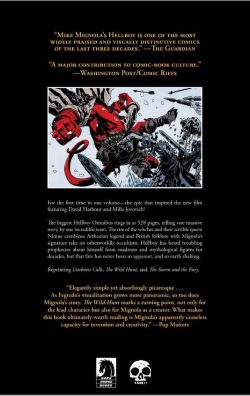
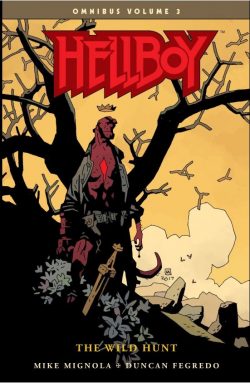
By Mike Mignola & Duncan Fegredo with Dave Stewart & Clem Robins (Dark Horse Books)
ISBN: 978-1-50670-668-9 (TPB) eISBN: 978-1-50670-689-4
Hellboy was first seen 25 years ago in the 1993 San Diego Comic Con programme. Many Happy Returns, Big Red.
After the establishment of the comicbook direct market system, there was a huge outburst of independent publishers in America and, as with all booms, a lot of them went bust. Some few, however, were more than flash-in-the-pans and grew to become major players in the new world order.
Arguably, the most successful was Dark Horse Comics who fully embraced the shocking new concept of creator ownership (amongst other radical ideas). This concept – and their professional outlook and attitude – drew a number of big-name creators to the new company and in 1994 Frank Miller & John Byrne formally instituted the sub-imprint Legend for those projects major creators wanted to produce their own way and at their own pace.
Over the next four years the brand counted Mike Mignola, Art Adams, Mike Allred, Paul Chadwick, Dave Gibbons and Geof Darrow amongst its ranks; generating a wealth of superbly entertaining and groundbreaking series and concepts.
Unquestionably the most impressive, popular and long-lived was Mignola’s supernatural thriller Hellboy.
As previously cited, the hulking monster-hunter debuted in San Diego Comic-Con Comics #2 (August 1993) before formally launching in 4-issue miniseries Seed of Destruction (with Byrne scripting over Mignola’s plot and art). Colourist Mark Chiarello added layers of mood with his understated hues. Once the fans saw what was on offer there was no going back…
This new trade paperback – and digital – series re-presents the succession of long-form tales and miniseries which followed as omnibus volumes, accompanied by a companion series of tomes featuring all the short stories. I’ll get around to them too before much longer…
This third titanic terror tome collects Hellboy: Darkness Calls, Hellboy: The Wild Hunt and Hellboy: The Storm and the Fury as well as short story ‘The Mole’ from Hellboy: Free Comic Book Day 2008.
What You Need to Know: on December 23rd 1944 American Patriotic Superhero the Torch of Liberty and a squad of US Rangers intercepted and almost foiled a satanic ceremony predicted by Allied parapsychologist Professors Trevor Bruttenholm and Malcolm Frost.
They were working in conjunction with influential medium Lady Cynthia Eden-Jones. Those stalwarts were waiting at a ruined church in East Bromwich, England when a demon baby with a huge stone right hand appeared in a fireball. The startled soldiers took the infernal yet seemingly innocent waif into custody.
Far, far further north, off the Scottish Coast on Tarmagant Island, a cabal of Nazi Sorcerers roundly berated ancient wizard Grigori Rasputin whose Project Ragna Rok ritual seemed to have failed. The Russian was unfazed. Events were unfolding as he wished…
Five decades later, the baby had grown into a mighty warrior engaging in a never-ending secret war: the world’s most successful paranormal investigator. Bruttenholm spent years lovingly raising the weird foundling whilst forming an organisation to destroy unnatural threats and supernatural monsters – The Bureau for Paranormal Research and Defense. “Hellboy†quickly became its lead agent.
Moreover, as the decades of his career unfolded, Hellboy gleaned tantalising snatches of his origins, hints that he was an infernal creature of dark portent: born a demonic messiah, somehow destined to destroy the world and bring back ancient powers of evil. It is a fate he despises and utterly rejects, even though the universe keeps inexorably and relentlessly moving him towards it…
The comics cavalcade of chills and thrills commences with a whimsical dreamy vignette by Mignola & Duncan Fegredo from Free Comic Book Day 2008: Hellboy. As the B.P.R.D. top gun spends a little downtime in England with some old – and largely deceased – pals, he has a bit of an extended fright after one of them points out ‘The Mole’ growing on the arcane agent’s left hand…
Re-presenting 2007’s 6-issue miniseries Hellboy: Darkness Calls and including a brace of epilogues created especially for the first collected edition, this tale is especially noteworthy as creator Mignola surrendered visual autonomy over his legendary character to illustrator Duncan Fegredo – with evocative support as always from colourist Dave Stewart and letterer Clem Robins – whilst moving the years-in-the-making saga towards its long-awaited cataclysmic conclusion…
The drama opens beneath rural Italy as accursed wizard Igor Weldon Bromhead hastens the destruction of humanity by summoning and binding the malign witch-goddess Hecate. Bromhead wants revenge and doesn’t care if the world burns in his getting of it. In faraway England, the ripples of his acts alert the fey folk and other supernatural entities that the End Times are finally upon them…
Hellboy is still in Britain; visiting old friends and desperately seeking to sidestep the fate he seems incapable of escaping or thwarting. Restless, he wanders into the woods, seemingly oblivious to the strange signs and portents dogging his heels until he encounters a strange trio of sinister characters and is sucked into a living history lesson…
After also meeting the ghost of witchfinder Henry Hood, Hellboy is made painfully aware of a deadly rising of the covens, as congregated creatures of the night attack him in an abandoned church. After a climactic battle – and more painful revelations of his past and ordained future – the paranormal paragon is suddenly yanked away into the infernal arctic domain of terrifying nemesis Baba Yaga: the Russian witch-queen sworn to destroy him…
In England, witches continue to gather, urged on by minor demon Gruagach; another unclean creature with a grudge against Hellboy. He advocates waking a long-buried queen of the dark to lead their final assault on the world and will not be dissuaded…
Meanwhile in Baba Yaga’s land of eternal chill, Hellboy is holding his own against the sorceress’ legions but is about to meet his match against her greatest thrall: an indomitable, unstoppable warrior dubbed Koshchei the Deathless.
The captive is not without allies. Fallen god Perun, giant wolves and a rebellious Domovoi (house spirit) all offer what aid they can but it’s the ministrations of little dead girl Vasilisa that provide Hellboy with an opportunity to escape the endless war and return to the physical world.
While he has been gone, however, events have moved on. The hags and weird folk have succeeded in freeing the one who will lead them in the final clash with humanity, and the benign spirits who have sheltered Man for so long see that their own long, long lives are finally done…
Offering astounding supernatural spectacle, amazing arcane action, mounting mystical tension and the imminent end of decades of slowly unfolding wonderment, this is merely the beginning of the End…
Climactic 8-issue miniseries Hellboy: The Wild Hunt from 2008-2009 draws together many subtly scattered clues disseminated throughout his innumerable tempestuous exploits and at last provides a conclusion to more than 15 years of slowly boiling magical suspense… as well as the incredible answers to the enigma of the horrific hero’s doom-drenched double destiny…
Mignola & Fegredo resume the fateful tale as the fey folk and other creatures of ancient mythology and legend are fading into non-existence in the face of a bloody rising of witches. The malevolent hags have a new queen who promises blood and slaughter and domination of the world by her kind whilst the only being who might stop her inexorable ascendance is missing…
In rural Italy, Hellboy receives a letter from a most ancient and august society. The paranormal paragon has been hiding; avoiding having to deal with the hard-wired cosmic fate which will not let him go…
Nevertheless, on reading the missive, Hellboy returns to England and meets the oldest members of the aristocratic secret society known as the Wild Hunt. They have been clandestinely defending the Sceptr’d Isles from mystic assault for centuries and – more aware of Hellboy’s destiny-drenched antecedents than the hero himself – urge him to join them in exterminating a band of primordial giants set to ravage the Realm…
The entire affair is a trap, but the mortal warriors are no match for Hellboy who defeats his duplicitous opponents before also despatching the giants in an uncontrollable burst of berserker madness…
In a faraway place, ensorcelled goblin Gruagach of Lough Leane reflects on a long-ago slight inflicted upon him by Hellboy. This has been the cause and trigger of all the carnage and world-shattering destruction about to unfold as soon as the new Queen of Witches is ready. Perhaps he repents it all, just a shade…
The subject of his hate is currently in Ireland, renewing the acquaintance of Alice whom he saved from being abducted as a baby by the Little People. The decades have been uncannily kind, as if some elfin magic rubbed off on her…
As the Red Queen cruelly consolidates her power in England, Hellboy and Alice are visited by former pixie potentate Queen Mab who reveals another missing part of a decades-long puzzle and hints that there might be way to thwart this oppressive, inescapable destiny.
However, when another supposed ally betrays them and Alice is wounded unto death, Hellboy is approached by re-embodied myth Morgan Le Fay who offers to trade for the mortal girl’s life.
Le Fay reveals that although the hell-born hero is certainly the son of the devil. his human mother could trace her own line back to Arthur Pendragon. Hellboy is the doom of mankind but also the True King of England, and she is his many-times removed grandmother…
If he wants to save humanity from an army of darkness, he has his own to call upon – one comprising millennia of Britain’s noble dead. All Morgan’s heir has to do is take up the Sword in the Stone.
It should be easy. His new occult opponent – now calling herself the Mor-Rioghain – also wants to awaken the dragons from the beginning of time and wipe out humanity: the fore-ordained role Hellboy has sworn never to enact…
With horror Hellboy realises he has not been running from one unwanted Destiny, but two…
With fate closing in all around him, Hellboy is uncharacteristically nonplussed, but an ethereal visitation prompts him to ferocious action and as he confronts his own inherently evil nature to finally throw off all the sly influences attempting to sway him and once again choose his own path…
The opportunity came via twinned 3-issue miniseries, entitled Hellboy: The Storm and Hellboy: the Fury and opens in England as the police investigate bizarre grave desecrations: ancient church crypts and stone sarcophagi all lacking the knights and nobles who once lay in them…
The constabulary are grateful for the assistance of noted parapsychologist Hellboy, but he’s not saying much…
As Hellboy and Alice review the situation they are again attacked by elements of Britain’s mythical past sworn to the new Witch Queen even as, elsewhere, Gruagach is confronted by the land’s greatest mage who reveals the shocking truth of the red-handed harridan. The petty-minded cause of humanity’s last war is given one last chance to repent and redeem himself, but with carnage and malevolence mounting in every realm, it might be too late…
As Hellboy and Alice catch their breath in the strangest tavern in the benighted kingdoms, the duties of his office and the risen army of nobles assemble and await his decision to accept or reject his twin destinies: King of Britain and all Mankind or Lord of Hell…
And as he struggles with his decision, Hellboy’s oldest enemies gather to confront him one last time and as he reels with the force of the choices the primal forces of Ragna Rok are finally awakened to Fight the Last Battle: the Champion of Man against the Great Dragon…
All that is left now is the killing and the final judgement… or is there still a chance to save the world and evade damnation?
Offering astounding supernatural spectacle, amazing arcane action, and unfolding with the pace of a mythic saga, the majestic mystery of Hellboy is a true landmark of comics storytelling and one every comics fan and fantasy aficionado should read.
Rounding out this occult endeavour is a stunning Hellboy Sketchbook Section which includes behind-the-scenes insights, author commentary, character designs, breathtaking drawings and roughs detailing the development and visual evolution of the beasties and bad guys populating the stories to sweeten the pot for every lover of great comics art.
Baroque, grandiose, alternating suspenseful slow-boiling tension with explosive catharsis, Hellboy mixes apocalyptic revelation with astounding adventure to enthral horror addicts and action junkies alike. This is another cataclysmic compendium of dark delights you simply must have.
Hellboy™ The Wild Hunt © 1993, 2018 Mike Mignola. Hellboy, Abe Sapien, Liz Sherman and all other prominently featured characters are trademarks of Mike Mignola. All rights reserved.

